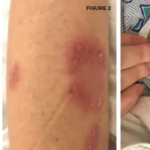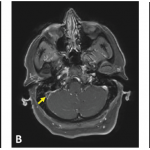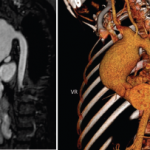In many patients, BS goes into remission with the passage of time.7 Young or male patients usually have more severe disease with an increased frequency of both mortality and morbidity related to eye, vascular, and neurological disease compared with older or female patients. Currently, loss of useful vision is seen in fewer than 10% to 15% of the patients with eye involvement compared with three-quarters of such patients 20 to 30 years ago. Although many patients with BS, especially older females, can be managed symptomatically, the young male who presents with potentially blinding and lethal disease has to be aggressively treated, especially early in the disease course. Therefore, disease management is tailored to the type and severity of symptoms and the sex and age of the patients.

Treatment
Colchicine and low-dose corticosteroids are commonly used for minor symptoms. For eye disease, vascular, and GI involvement, azathioprine with or without a tumor necrosis factor (TNF) inhibitor is usually the right treatment choice. The TNF inhibitor most commonly reported to treat BS is infliximab; in our practice adalimumab is also used, especially for patients with eye disease. Cyclosporine can also be used with azathioprine for eye disease. Azathioprine also has been shown to help with other minor manifestations of BS when colchicine and other treatments fail. Interferon-α-2a has also been used more recently for eye and CNS disease.
Recently, the European League Against Rheumatism published guidelines for managing BS.8 These provide excellent guidance for the management of disease in organ systems other than the vascular, neurological, and GI systems, simply because of the lack of controlled studies related to these pathologies. According to these recommendations, topical measures, including local steroid application, are sufficient for isolated oral and genital ulcers.
Because the main pathology of BS is inflammation of the vessel wall and the absence of thromboembolism despite the frequent thrombophlebitis, immunosuppressive agents such as corticosteroids and azathioprine are used instead of anticoagulants in case of thrombosis. Cyclophosphamide pulse therapy and corticosteroids are useful, especially early in the disease course, for pulmonary and peripheral arterial aneurysms. Although corticosteroids are effective for dural sinus thrombosis, it is difficult to treat parenchymal CNS disease.
The NYU Experience
In our patient cohort at NYU, we have noticed some differences when comparing these patients with cohorts from areas where BS is more endemic. Virtually all of our patients are referred with a suspected diagnosis of BS; there have been a small number who were later found to have Crohn’s disease or some other vasculitic conditions. About three-quarters of our patients are females, with about 28% having eye disease. The interesting feature of the eye involvement is that we have had no blind eyes in our cohort. This situation can be due to referral bias or to some other factor, but is interesting to note. We looked at our patients and divided them into two groups—patients of Northern European descent and patients from areas where BS is endemic. Roughly two-thirds of our patients are of Northern European descent and one-third from more endemic areas. The Northern European group had significantly more GI disease and more female patients. These findings are consistent with data from other groups, indicating that there are geographic differences not only in disease manifestations but also possibly in disease severity, as evidenced by the absence of blindness in our cohort.9



